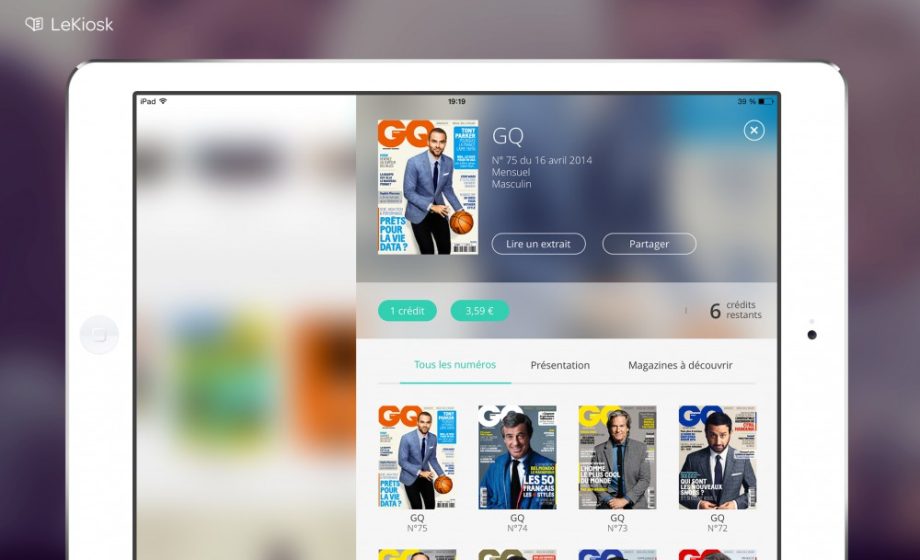
It’s not easy being media these days. In France, things have gotten so bad that the government negotiated for Google to create a €60 Million fund dedicated to helping dying print magazines switch to digital. Now that said money has now been all but dolled out, Google has launched its paid newsstand, which was already available in the US, UK, Italy & Australia, in France & Germany, allowing users to buy magazines directly from Google’s Newsstand app.
The timing couldn’t be better for LeKiosk, often called “Spotify for Press,” who recently launched a complete overhaul of its iOS app, which provides a monthly subscription service that allows users to subscribe to 10 publications for 10€/month. In addition. LeKiosk selects 4 articles/issue/publication and makes them available for free, and users can buy magazines à la cart.
Previously, LeKiosk had received quite a lot of attention for their iOS & Android app, which featured a 3D simulation of a French kiosk, where users could physically move around the kiosk and select magazines. As a feature, it was quite a bust – they’ve scrapped that in favor of their new, very sexy flat design – however, it has been quite helpful for them in terms of gaining visibility.
Now available in France, the UK & Italy, LeKiosk has roughly 200 paid publications per market, meaning that users are likely to find as much content if not more from LeKiosk than they will on Google’s NewsStand. In an interview with Director of Marketing Michael Philippe, who co-founded the company at age 21 in 2007, Philippe revealed that the redesign is just the beginning for LeKiosk – a new architecture on which they plan to roll out new features in the coming months.
“While some have called us ‘Spotify for Press’ – a title which hasn’t earned us many friends in the Press circuit here in France – we see ourselves going head-to-head with Flipboard” – Michael Philippe, Director of Marketing & Co-Founder, LeKiosk
Philippe has been eye-ing Flipboard for quite some time, and says many of LeKiosk’s updates in the future will see them approaching the same news consumption audience as Flipboard, which has raised $160M in funding to date (next to LeKiosk’s $10M raised in 2012).
Today, LeKiosk receives PDFs of a publication’s print magainze, which they subsequently treat and render in order to produce an all-HD viewing experience: images are crisp on the iPad retina, and zooming in on text is responsive, unlike traditional PDF-viewing experiences (like Vogues’ French iPad app, which we reveiewed last year).
LeKiosk will soon be able to ‘disect’ print magazines, pulling out individual articles and subsequently enabling users to read articles one at a time, instead of page at a time. Philippe boasted LeKiosk’s proprietary viewing experience, which he thinks will trump the Flipboard layout that many have come to use & imitate.
Afterwards, it’s only a jump skip and a step to bringing free content (read: RSS & Social feeds) onto the viewing experience, as well as recommending content across multiple paid publications.
My takeaway from trying out the app was quite optimistic. From a content consumption point of view, the application is nothing short of beautiful. The browsing experience feels like the App Store, and the reading experience combines the experience of reading print (without the tacky Flipboard-style page flip animation), while a horizontal scroll bar allows you jump through the magazine and slide through pages without compromising the view.
Going forward, LeKiosk’s biggest hurdle will be showing paid media that they can open themselves up to a greater audience – the same way the ailing Music industry embraced online streaming subscriptions – by getting on board LeKiosk. To date, LeKiosk has had trouble getting the paid daily news sites – LeFigaro, LeMonde, Les Echos, etc. – on board; however, those are the very players who are seeing revenues crunched the most, so diversifying revenue and opening up their paywall is an inevitability.

